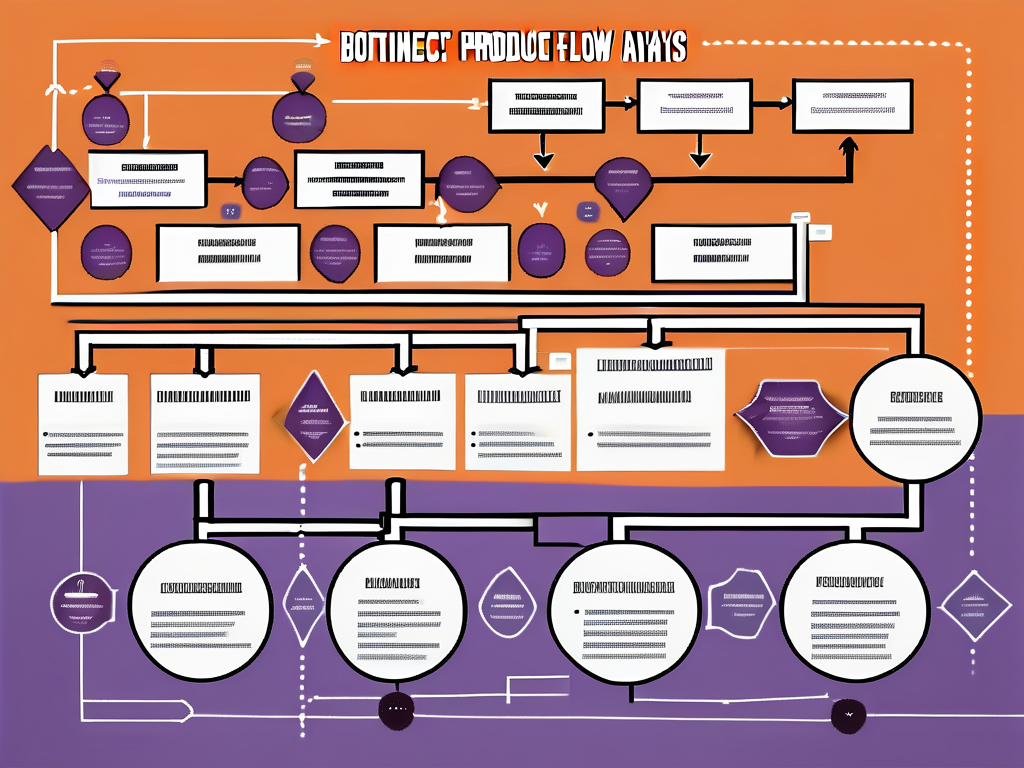Did you know that efficient product flow analysis is a key factor in warehouse optimization? Whether you’re a logistics manager or a warehouse operator, understanding how products move through the warehouse is crucial for enhancing efficiency, reducing costs, and maximizing profits.
In this blog, we will explore:
- The essentials of product flow analysis for warehouse optimization.
- Key steps for implementation, such as product identification and flow mapping.
- Benefits of analysis, like improved efficiency and cost reduction.
- Common challenges and strategies to overcome them.
Table of Contents
ToggleThe Concept of Product Flow Analysis in Warehousing EXPLAINED
Product flow analysis, also known as flow mapping or material flow analysis, is a systematic approach to understanding and optimizing the movement of products within a warehouse.
Conducting a product flow analysis requires a systematic approach to ensure accurate results. Here are the essential steps to follow:
1. Identifying the Products
The first step is to identify the products that are being handled in the warehouse. Categorize them based on their characteristics, such as size, weight, fragility, and temperature sensitivity. Additionally, consider the demand patterns for each product to prioritize their flow analysis.
When identifying products, it’s crucial to also take into account any special handling requirements they may have.
Some products may be hazardous and require specific storage conditions, while others may have expiration dates that need to be closely monitored. Understanding these nuances is essential for a comprehensive product flow analysis.
2. Mapping the Flow of Products
Once the products have been identified, it’s time to map their flow throughout the warehouse. Begin by identifying the entry points, such as receiving docks or production areas.
Then, trace their path through storage areas, picking zones, packing stations, and finally, the shipping area. Visualize this flow using floor plans or digital mapping tools to gain a holistic understanding of the product movement.
Mapping the flow of products not only helps in understanding the physical movement within the warehouse but also aids in identifying potential cross-contamination points or areas where congestion is likely to occur.
By considering factors such as traffic flow and proximity to other products, a more detailed analysis can be conducted to optimize the overall product flow.
3. Analyzing the Data
After mapping the flow, collect relevant data at various checkpoints. This includes data on lead times, processing times, storage durations, and transportation durations.
Analyze this data to identify bottlenecks, inefficient processes, and areas where improvements can be made. Utilize this information to make data-driven decisions, such as process re-engineering, layout modifications, or automation implementation.
Benefits of Implementing Product Flow Analysis

Implementing product flow analysis offers several tangible benefits for warehouses striving for operational excellence. Let’s explore some of these benefits:
- Efficiency in Warehouse Operations: Product flow analysis helps optimize the movement of goods by reducing travel distances and equipment idle time, which streamlines processes, eliminates bottlenecks, and enhances operational efficiency.
- Automation Opportunities: Implementing automated systems such as conveyor belts and robotic picking systems can further enhance efficiency and accuracy, reducing the likelihood of human errors.
- Cost Reduction: Analyzing product flow uncovers inefficiencies that lead to unnecessary costs, allowing warehouses to reduce labor costs, inventory holding costs, and transportation expenses.
- Profit Maximization: Improved inventory management and faster order processing not only boost profitability but also enhance customer satisfaction.
- Sustainability Efforts: Optimizing product flow contributes to environmental conservation by reducing unnecessary movements and optimizing space utilization, and implementing eco-friendly practices like energy-efficient lighting and recycling programs.
Challenges in Product Flow Analysis
While product flow analysis offers numerous benefits, implementing it is not without its challenges. Let’s explore the common obstacles and potential solutions:

Common Obstacles in Implementing Product Flow Analysis
One of the primary challenges is the lack of accurate data. Collecting and analyzing data can be a complex task, requiring dedicated resources and detailed tracking systems.
Additionally, resistance to change and a lack of collaboration among stakeholders can impede the successful implementation of product flow analysis.
Another obstacle in implementing product flow analysis is the complexity of supply chains. With multiple touchpoints and variables involved in the flow of products, it can be challenging to track and analyze every step accurately.
This complexity can lead to data discrepancies and gaps in the analysis, hindering the effectiveness of the process.
Solutions to Overcome These Challenges
To overcome the challenges, it’s important to invest in robust data collection and tracking systems. Implementing technology solutions, such as warehouse management systems or RFID tracking, can facilitate accurate data collection and analysis.
Furthermore, fostering a culture of continuous improvement and encouraging cross-functional collaboration can help overcome resistance to change and ensure the successful implementation of product flow analysis.
Additionally, conducting regular audits and reviews of the data collection process can help identify and rectify any inaccuracies or gaps in the data.
By continuously monitoring and refining the data collection methods, organizations can ensure that the product flow analysis is based on reliable and up-to-date information.
Moreover, providing training and support to employees involved in the process can improve data accuracy and promote a culture of data-driven decision-making within the organization.
Future Trends in Product Flow Analysis
The future of product flow analysis is closely tied to advancements in technology and the growing influence of artificial intelligence (AI) and machine learning. Let’s take a glimpse at the potential trends:
- Technological Advancements: New technologies such as IoT sensors, real-time tracking systems, and data analytics tools are revolutionizing product flow analysis by enabling more accurate and timely data collection.
- Real-time Insights: IoT sensors in products and packaging provide insights into their location, condition, and movement, allowing for granular, real-time monitoring and optimization of product flow.
- AI and Machine Learning Integration: AI algorithms analyze vast data from sensors and scanners, using predictive analytics to anticipate demand, optimize product placement, and improve inventory forecasting, which enhances automation and efficiency.
- Continuous Improvement: Machine learning algorithms continually adapt and improve, allowing warehouses to make data-driven decisions and implement strategies to prevent stockouts, minimize excess inventory, and optimize product flows in a dynamic environment.
Elevating Warehouse Efficiency with Product Flow Analysis
In conclusion, product flow analysis is a critical process for optimizing warehouse operations. By understanding the concept, conducting a thorough analysis, and implementing the findings, warehouses can achieve enhanced efficiency, cost reduction, and improved customer satisfaction.
As technology continues to advance, the future of product flow analysis holds promises of even greater optimization and automation in the warehouse management industry.






